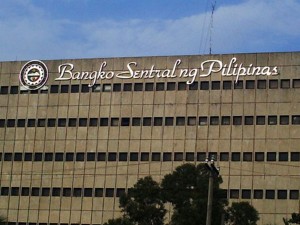Bangko Sentral to keep rates steady

PRESENT INTEREST RATES STAY The Bangko Sentral ng Pilipinas will keep the present key interest rates, saying inflation is less of a concern now than the need to boost economic growth.
The Bangko Sentral ng Pilipinas has signaled that it would keep key interest rates and the reserve requirement on banks steady when the policy-making Monetary Board meets this Thursday.
According to BSP Governor Amando Tetangco Jr., inflation was less of a concern at the moment than the need to boost economic growth.
“The weakness in advanced economies is seen to weigh more on emerging economies than previously anticipated, especially in light of the protracted resolution of the European debt problem and the sluggish employment in the United States,” Tetangco said.
The economic and debt woes in the advanced Western economies have dampened growth potential of the entire global economy and are expected to drag even the performance of emerging markets like the Philippines.
Tetangco said there was a need to counter the ill-effects of the unfavorable external environment to ensure the Philippines would not significantly slow down.
Article continues after this advertisement“Like other EMEs [emerging market economies], the Philippines is not immune to what’s happening externally. We will ensure that our [BSP’s] policy stance remains supportive of economic growth,” Tetangco said.
Article continues after this advertisementPartly due to the dampening effects of the global economy, the Philippines grew only 4 percent in the first half. This prompted the Aquino administration to cut its growth target this year to 4.5-5.5 percent from 5-6 percent.
Tetangco said the need to boost growth would be taken into account in the Monetary Board meeting this week.
So far this year, the BSP has raised the key interest rates twice by a total of 50 basis points. This brought the central bank’s overnight borrowing and lending rates, which influence commercial interest rates, to 4.5 and 6.5 percent, respectively.
Higher interest rates are meant to temper demand for loans and thus slow down consumption and inflation.
The BSP has so far this year raised the reserve requirement on banks twice by a total of 2 percentage points. This brought the reserve requirement, the percentage of deposits that banks must keep as reserves with the BSP, to 21 percent.
A rise in the reserve requirement is meant to temper the growth in available money for lending to slow down consumer demand and, consequently, inflation.
The increases in interest rates and the reserve requirement earlier this year were meant to combat inflation, which was earlier feared to exceed the government’s official ceiling of 5 percent.